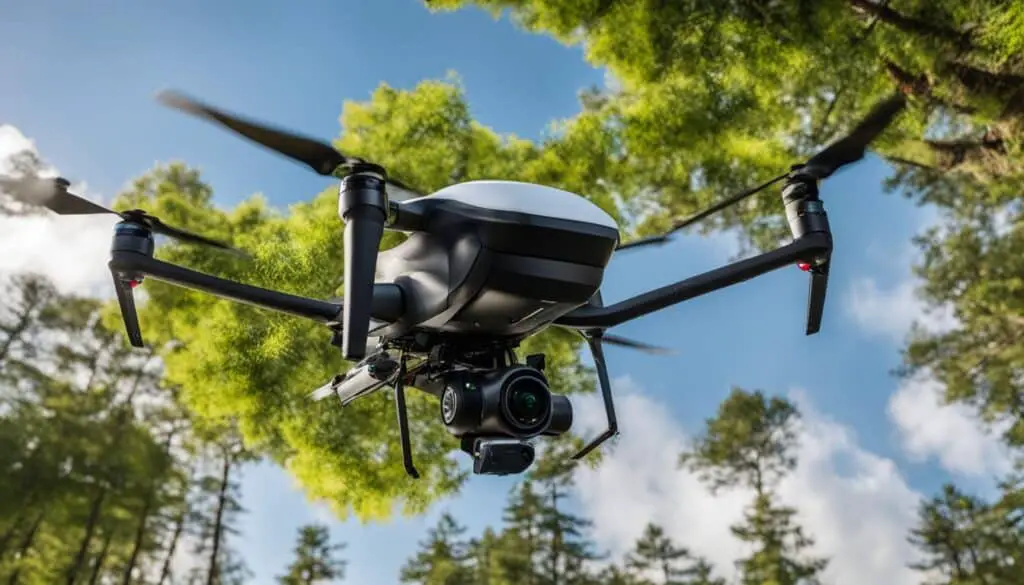
Artificial Intelligence (AI) is playing a crucial role in addressing the triple planetary crisis of climate change, nature and biodiversity loss, and pollution. AI refers to systems or machines that perform tasks requiring human intelligence and can improve themselves over time based on the information they collect. AI has the potential to tackle environmental challenges such as designing energy-efficient buildings, monitoring deforestation, and optimizing renewable energy deployment.
The United Nations Environment Program (UNEP) has developed the World Environment Situation Room (WESR), a digital platform that uses AI to analyze complex environmental datasets in real-time. Another AI-driven initiative of UNEP is the International Methane Emissions Observatory (IMEO), which leverages AI to monitor and mitigate methane emissions. AI also plays a role in tracking air quality through initiatives like the GEMS Air Pollution Monitoring platform. Additionally, AI can help calculate the environmental footprints of products and reduce ICT emissions. With advancements in AI technology, there is tremendous potential to drive environmental conservation and combat climate change.
Key Takeaways:
- AI is revolutionizing environmental conservation and climate change mitigation.
- AI can analyze vast amounts of data to provide valuable insights for addressing climate change challenges.
- AI applications include monitoring deforestation, optimizing renewable energy deployment, and tracking air quality.
- UNEP’s World Environment Situation Room and International Methane Emissions Observatory are AI-driven initiatives.
- Advancements in AI technology hold great potential for further innovation in environmental conservation efforts.
Leveraging AI for Monitoring and Mitigating Climate Change Impacts
Artificial Intelligence (AI) technology is proving to be an invaluable tool in monitoring and mitigating the impacts of climate change. By harnessing the power of AI, we can gather data and insights that enable us to take proactive measures towards environmental conservation. One significant application of AI is the detection of permafrost melting in the Arctic. With the Arctic warming at an alarming rate, AI algorithms and satellite technology can help us track the thawing of permafrost in real-time. This information is crucial for preventing infrastructure damage and informing policymakers about the urgent need for greenhouse gas emissions reductions.
The agricultural industry also benefits from AI technology in the face of climate change. By analyzing data on soil conditions, weather patterns, and crop health, AI can optimize farming practices. Through precise fertilizer application and efficient irrigation, AI ensures the world’s food supply remains sustainable. Furthermore, AI has the potential to mitigate greenhouse gas emissions throughout the supply chain. AI algorithms can identify areas of improvement and enable data-driven decisions, ultimately reducing the environmental impact of various industries.
As we continue to witness the adverse effects of climate change, it is essential to leverage AI for monitoring and mitigating these impacts. By employing AI technology, we can make informed decisions and take proactive steps towards environmental conservation. The role of AI in climate change mitigation is undeniable, and sustainable AI solutions are crucial for a more resilient and sustainable future.

Advancements in AI for Climate Change Prediction and Modeling
Artificial intelligence (AI) is revolutionizing the way we approach climate change prediction and modeling. By harnessing the power of AI algorithms, we can analyze large climate datasets and simulate future climate scenarios, providing valuable insights into the impacts of climate change on our environment. With AI-driven initiatives for climate change adaptation, we can better understand phenomena such as sea-level rise, changes in glacier mass, and shifts in biodiversity patterns.
One of the key benefits of AI technology is its ability to predict extreme weather events and their potential effects. By processing historical climate data and utilizing machine learning algorithms, AI can help us prepare for and adapt to these events. This is crucial for developing effective strategies to mitigate the risks posed by climate change.
Furthermore, AI can assist in monitoring and evaluating the success of climate change policies and interventions. By analyzing real-time data and feedback from environmental sensors, AI algorithms can provide valuable insights into the effectiveness of different approaches. This data-driven feedback loop enables policymakers and researchers to make more informed decisions and adjust their strategies accordingly.
AI-Enabled Climate Models
AI technology also plays a significant role in improving climate models. By integrating AI algorithms into existing models, researchers can enhance their accuracy and predictive capabilities. AI can help identify complex patterns and relationships within the climate data, enabling us to develop more robust and reliable models for climate change prediction.
“AI technology has the potential to significantly impact climate change prediction and modeling. By analyzing large climate datasets, AI algorithms can predict and simulate future climate scenarios, providing valuable insights for policymakers and researchers.” – Climate Scientist
With advancements in AI technology, we can expect even more sophisticated models that can capture the intricacies of the climate system. These models will enable us to better understand the long-term effects of climate change and develop strategies to mitigate its impacts.
| Impact of AI on Environmental Conservation | AI-Driven Initiatives for Climate Change Adaptation |
|---|---|
| Improved accuracy in climate change prediction | Real-time monitoring of climate-related parameters |
| Enhanced understanding of complex climate patterns | Identification of high-risk areas for extreme weather events |
| Optimization of climate change policies and interventions | Data-driven decision-making for adaptation strategies |
In conclusion, AI technology is driving significant advancements in climate change prediction and modeling. By leveraging AI algorithms, we can gain valuable insights into climate change impacts, predict extreme weather events, and optimize adaptation strategies. As AI continues to evolve, we can expect more accurate climate models and improved strategies for addressing the challenges posed by climate change.

Conclusion
AI has revolutionized environmental sustainability by offering advancements in various sectors. Through its ability to analyze large amounts of data, AI provides valuable insights and predictions for addressing climate change challenges. From monitoring permafrost melting in the Arctic to optimizing agricultural practices and reducing greenhouse gas emissions, AI plays a crucial role in driving sustainable solutions.
The advancements in AI technology continue to propel environmental conservation efforts. By harnessing the power of AI, we can work towards safeguarding the planet and creating a sustainable future for generations to come. As AI continues to evolve, there is immense potential for further innovation, integration, and collaboration in the field of environmental sustainability.
With AI as a key ally, we can develop smarter strategies to mitigate climate change impacts, preserve biodiversity, and ensure the long-term health of our planet. The journey towards a sustainable future is ongoing, but with advancements in AI, we are equipped with powerful tools to address environmental challenges and drive positive change.
FAQ
How is AI being used to tackle climate change?
AI is being used in various ways to address the impacts of climate change. It is being utilized to monitor permafrost melting in the Arctic, optimize agricultural practices, reduce greenhouse gas emissions, and predict future climate scenarios.
What is the World Environment Situation Room (WESR)?
The World Environment Situation Room (WESR) is a digital platform developed by the United Nations Environment Program (UNEP) that uses AI to analyze complex environmental datasets in real-time.
How does AI help in monitoring and mitigating methane emissions?
The International Methane Emissions Observatory (IMEO) leverages AI to monitor and mitigate methane emissions. AI algorithms analyze data to identify sources of methane emissions and develop strategies for reduction.
Can AI assist in predicting extreme weather events?
Yes, AI algorithms can analyze climate data to predict extreme weather events and their potential effects. This information can help with better preparedness and adaptation strategies.
How can AI be used in climate change prediction and modeling?
By analyzing large climate datasets, AI algorithms can predict and simulate future climate scenarios. This provides valuable insights for policymakers and researchers in understanding the impacts of climate change and developing effective strategies for adaptation.
Source Links
- https://hub.jhu.edu/2023/03/07/artificial-intelligence-combat-climate-change/
- https://abcnews.go.com/US/mitigating-climate-change-preserving-biodiversity-ways-ai-environment/story?id=101590463
- https://www.unep.org/news-and-stories/story/how-artificial-intelligence-helping-tackle-environmental-challenges








